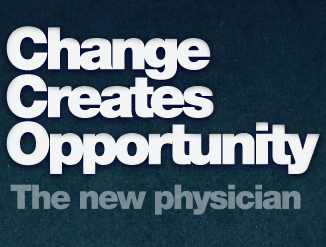 The 12 step path from an idea to a successful innovation or commercial venture.
The 12 step path from an idea to a successful innovation or commercial venture.
We’ve all had great ideas. Whether the insight comes to you in the shower, while driving to work, or in a dream, a new concept or thought pops into your mind and begs for attention. Very few ideas, however, actually see the light of day. The difference between an idea and innovation is what happens after you think of the new idea. Innovation is about inventing something that can create economic value in the marketplace. Ideas are commodities, but innovation is about finding and validating the business opportunity that both the leadership of the organization and its culture embrace and commit to and which is connected to its business strategy. Implementing innovation is the hard work that goes into conceptualizing an idea to take advantage of a market opportunity and executing a commercialization plan that gets results.
Today in health care, whether it be drugs, devices, diagnostics, healthcare IT or alternative care models, successful innovation is about both predicting and observing patients’ wants and needs and satisfying them with new products and services.
Now, more than ever, industry and health care entities need physicians to help them innovate to stay competitive. Our post-capitalist economy is driving leaders to harvest new ideas and the intellectual capital of their knowledge workers. Success depends on using processes for creating and analyzing new ideas. Limited time and competition for resources requires prioritization.
The 12 Step Roadmap to Innovation
The path from an idea to a successful innovation or commercial venture is lined with mine fields that can sabotage success at any step. At Venturequest (http://www.venturequestltd.com ), my colleague, Courtney Price, and I have worked with multiple organizations in industry, academia and government labs. We have developed and applied a 12 step process to increase the success rate for implementing innovation and creating new revenue streams. http://www.ncbi.nlm.nih.gov/pubmed/16615405 The process is designed to quickly eliminate ideas that don’t have a high likelihood of market success, that don’t fit with the strategic mission of your health care organization, or that involve too high a level of market, technical, intellectual property or implementation risk for the proposed return on investment. Our 12 Step Innovation Roadmap provides a framework for screening, incubating, commercializing, and benchmarking the success of new ideas and tested including tools and protocols for health care providers. At each step of the process, a Go or No-Go decision is made about the opportunities. Sometimes the opportunity skips some of the steps based on the market and stage of development. Below is a brief description of each step.
Idea generation consistent with the strategic plan
Ideas are a dime a dozen. The challenge is finding ideas that match the business strategy, connect with senior management, and are embraced by the organization’s culture. Such ideas leverage the core competencies of the organization as well as build on its intellectual assets including intellectual property, branding, new technologies, etc. They both build upon sustainable core competencies as well as forecast future breakthroughs. Brainstorming or collecting new ideas that don’t match your facilities culture or its strategic plan will have a limited chance of success.
Concept development and initial testing
Once ideas are selected that meet the above criteria, it is necessary to describe their uniqueness and determine if there could be a sustainable competitive advantage. A clear value proposition, i.e. the worth, importance or usefulness to your customers, should be clear early in the process. As you obtain more information about the opportunity, the business concept will change over time in response to newly discovered market, competitive, and patient information. The next steps involve a series of iterations designed to refine your idea.
Seven-Step Opportunity Evaluation
After the concept is developed, it is time to quickly assess the potential opportunity by using a quick Seven-Step Opportunity Evaluation which takes less than 30 minutes to complete. It addresses the problem being solved, the potential opportunity, and the market for the opportunity, potential revenue, required funding, intellectual property creation and protection, and stage of development. It also identifies potential customers, competitors, and commercialization viability. This quick analysis will help you define whether the business, industry or markets you propose to enter are appropriate. It will also help you define what kinds of people you will need to make your venture successful.
Model Opportunity
Once the concept is evaluated using the Seven-Step Opportunity Evaluation, it is time to discover the inherent strengths and weaknesses of the opportunity. This software tool is based on 24 distinctive characteristics to objectively evaluate the opportunity. The purpose of this protocol is to identify the Achilles’ heel of the concept. It was designed to assist physicians and researchers without a business education to objectively evaluate the opportunity. As weak areas of the concept are improved, the better chances it has for success. If you identify potential risks or threats that cannot be address, then the idea should be abandoned.
Business Opportunity Assessment
The Business Opportunity Assessment is a more in-depth review of the opportunity including market research and due diligence that includes IP analysis, opportunity development timing, legal liability issues, applications of the opportunity, barriers to entry, industry trends, growth potential, market positioning, competitive analysis, financial projections and pricing, resource requirement analysis, and licensing potential to name a few. These are the important considerations to address if it looks like the opportunity has a strong commercialization potential. This software tool is designed in a question and answer format which make it easy to complete a 360 degree assessment.
Market Validation
Once you have completed the Business Opportunity Assessment and have decided to proceed, the Market Validation process focuses on obtaining feedback on how the opportunity addresses specific market needs as well as taking a hard look at your competition. This step helps differentiate the opportunity from competing opportunities based on patient needs. This process maximizes perceived patient benefits and eliminates extraneous features that increase costs. This experience-based market learning is critical to market success and helps develops better business judgment for a Go or No-Go decision.
Revise Business Opportunity Assessment
Based on the results of the Market Validation, you can now revise your Business Opportunity Assessment and build a commercialization strategy.
Finalize the Commercialization Plan
By this time, you should have a good idea about whether you have a viable innovation. Since your idea will be competing for resources with other ideas, however, you will need to prioritize and decide which has the best odds for success. You will need to carefully hone your business model. You will now write your business plan that succinctly describes the story of your proposed business. The good news is that by this time approximately 70 % of your business plan has been written.
Write the Business Plan
Now it’s time to write your final business plan. Unfortunately, most entrepreneurs go immediately to this step first without using appropriate filtering systems. This results in a business plan that has unvalidated assumptions and is rejected or leads to an enterprise that fails.
Solicit feedback and revise the Business Plan
After the business plan has been written, it is time to solicit feedback from respected advisors who will provide realistic options about the potential of commercializing the new opportunity. Their opinions and suggestions should be incorporated into the final business plan.
Present the Business Plan.
It is now time to present the Business Plan and get stakeholder approval and resources to launch new venture.
Execute the Business Plan
Congratulations. You’ve got the go ahead for your new idea. Now the work begins. Fortunately, your winning business plan based on the 12 step pathway will provide an operational road map to track and benchmark the efforts to commercialize the opportunity. Your plan will provide you with the timelines and metrics for success. A strong Executive Summary should be distributed to the review board before the presentation and a succinct Elevator Pitch should be developed.
Whether you are considering a product or service or process improvement, the 12 Step Plan is a useful guide to getting your idea to market quicker, for less cost and with more success.
 There are 4 major consumer trends that are rippling through healthcare.
There are 4 major consumer trends that are rippling through healthcare.




 Post a Comment
Post a Comment





